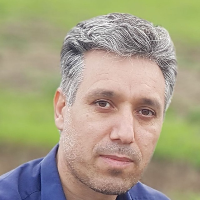Optimization of hairy roots induction in chicory (Cichorium intybus L.) and effects of auxin and carbon source on their growth
Hairy root cultures are an effective method for production of secondary metabolites, because hairy roots are genetically and biologically stable and they are able to produce metabolite within a short time without need to use hormones. Chicory (Cichorium intybus L.) is one of the important medicinal plants that contains a number of important medicinal compounds.In this research, hairy root induction was established through the mediation of the A4 strain of Agrobacterium rhizogenes. In first experiment, the effects of type and age of explant and co-culture times on the efficiency of hairy root induction were investigated. In the second experiment, the effect of three different media (Murashige and Skoog solid, liquid and liquid half strength) were investigated on growth rate and biomass accumulation hairy roots. In third experiment, effects of type and age of explant were investigated on the total phenolic content of hairy roots. In fourth experiment, the effect of various concentrations of NAA (0, 0.5, 1 and 1.5 mg/l) and sucrose (3, 4, 5 and 6%) were investigated on biomass accumulation. The obtained results showed maximum hairy root induction (60 percent) and number of roots (11.61 roots per explant) induced from 5-days-old cotyledons. The half strength medium of liquid Murashige and Skoog was the best medium for growth of hairy roots. Also, maximum total phenolic content in hairy roots was obtained by 28-days-old leaves. Medium supplemented with combination of 0.5 mg/l NAA and 3% sucrose showed the best effect on biomass accumulation.
-
Investigation on the Effects of Carbon Nanotubes and Kinetin on Growth and Regeneration of Salvia nemorosa under in vitro Conditions
Yunos Pourbeyrami Hir *, , Mahsa Ahadzadeh, Shabnam Shaker, Roghayyeh Nabipour Sanjbod
Journal of horticulture science, -
Exploring Disinfection Methods for Iris pseudacorus L. Rhizome and Seed Under In-Vitro Conditions
Vajihe Abbasi Ghadi, *, Younes Pourbeyrami Hir, Mehdi Mohebodini, Vali Ollah Ghasemi Omran
Iranian Journal of Horticaltural Sciences,


